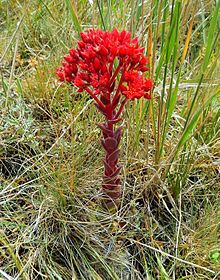| Rosularia | |
|---|---|
 | |
| Rosularia flowers | |
| Scientific classification | |
| Kingdom: | Plantae |
| Clade: | Tracheophytes |
| Clade: | Angiosperms |
| Clade: | Eudicots |
| Order: | Saxifragales |
| Family: | Crassulaceae |
| Subfamily: | Sempervivoideae |
| Tribe: | Sedeae |
| Genus: | Rosularia (DC) Stapf |
| Species | |
See text | |
| Synonyms | |
SempervivellaStapf [1] | |

Rosularia is a small genus of the family Crassulaceae. It includes about 28-35 species from Europe, the Himalayas, and northern Africa.